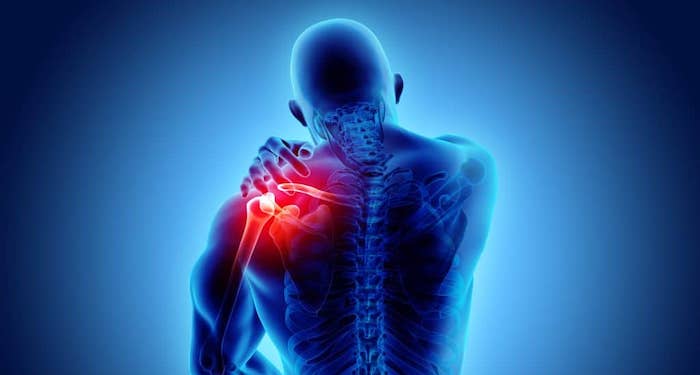
What Is the Rotator Cuff?
A rotator cuff is a group of muscles and tendons that envelop the upper part of your arm bone; they work by attaching the head of the humerus to the shoulder.
Four muscles are responsible for attaching your shoulder to your arm. These are the subscapularis, infraspinatus, supraspinatus, and teres minor. This entire system is very delicately balanced as it is responsible for an extensive range of motion and essential control over the arm.
Many different things could cause pain in the rotator cuff. One of the tendons or muscles may have been injured by poor posture, accident, or repetitive motion, and only a medical professional is qualified to give you a proper diagnosis.
Who Is at Risk for Rotator Cuff Injuries?
Anyone who performs overhead motions regularly, such as athletes, painters, carpenters, and people in construction jobs, age, and family history are also factors. Basically, if you are raising your arms constantly, you have a higher likelihood of injuring the shoulder.
Remember that when looking up a term like rotator cuff pain, you are likely to come across many articles that assume you have a tear. This can be confusing and shows why it is so important to receive a proper examination and accurate diagnosis; you avoid unnecessary worry and make sure you are not treating something incorrectly and possibly further damaging yourself.
Typical symptoms are described as dull aches deep within the shoulder, a difficulty raising the affected arm, reaching behind your back, etc. Other symptoms of rotator damage include difficulty sleeping and weakness of the arm.
Can You Rehabilitate a Rotator Cuff Without Surgery?
It all depends on the type of injury you have sustained. In any case, physical therapy can go a very long way in mitigating pain and helping your body heal itself. Most rotator cuff injuries cause swelling and inflammation in the affected region. This causes blood flow to reduce, starving the injured area of the nutrients and oxygen it needs to heal. It is a catch-22 and feels like a circular argument; your shoulder has inflammation because it is injured, it is damaged because it cannot heal itself, and it cannot heal itself because of the inflammation.
This vicious circle demonstrates why physical therapy is so important and how it can help. By using a combination of therapeutic massages, the appropriate exercise routines, and treating the shoulder with neuromuscular electrical stimulation, you can re-establish blood flow and begin the healing process without having to rely on invasive surgery and the use of a scalpel.
Worst Case Scenario
If there is no improvement after performing physical therapy and stimulating the affected area in various ways, surgery might be the only option. If you and your doctor decide on surgery, there are different options available to you that, depending on the type of injury you sustained, may help relieve your pain. These include the following: arthroscopic tendon repair, open tendon repair, tendon transfer, and shoulder replacement.
Precision Pain Care and Rehabilitation has two convenient locations in Richmond Hill – Queens and New Hyde Park – Long Island. Call the Queens office at (718) 215-1888, or (516) 419-4480 for the Long Island office, to arrange an appointment with our Interventional Pain Management Specialist, Dr. Jeffrey Chacko.













